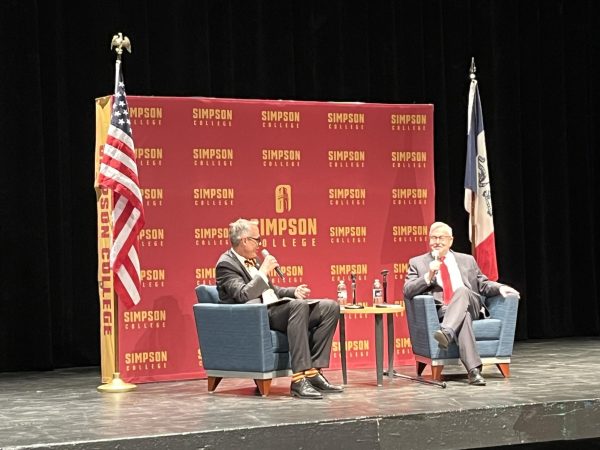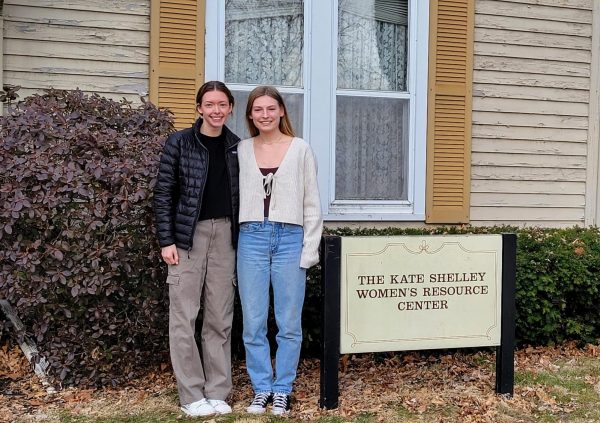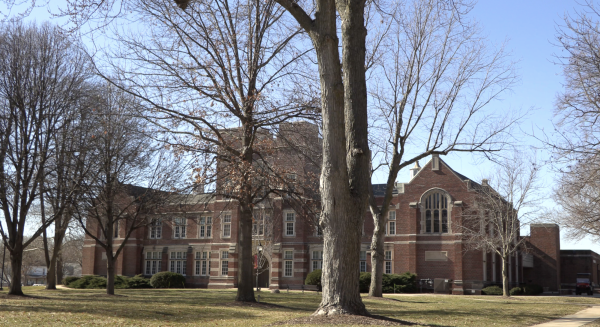Simpson to begin SC in 3
November 15, 2011
SC in Three will be providing students with a new pathway to obtain degrees in less time and by spending less money.
Simpson already allows students to take its programs at a relatively fast pace, but now the college will play a more active role in helping those desiring to graduate early.
“It’s not really doing anything different,” said Steve Griffith, senior vice president and academic dean. “It’s just being more upfront about the possibility that if you take the right courses in the right order, you can graduate in less than four years.”
This new plan is being marketed specifically towards incoming freshmen.
“We think it will also attract students that might not have considered Simpson, because it will be very attractive to have the option of finishing a full-fledged degree in three years,” Simpson College President John Byrd said.
The program may help keep Simpson on prospective students’ lists of possible colleges to attend.
“The hope is that it draws students to us that would otherwise just cross us off their list,” Griffith said. “The hope is that we get more students, that we’re attractive to students.”
The SC in Three initiative will require students to express some sort of interest in order to begin the pathway to a degree in three years instead of four.
“It’s not a program in the sense that you don’t really have to qualify for it; you don’t have to apply for it,” Griffith said. “You sort of have to identify yourself as someone who is interested in doing this, and then what we’re saying is we will work to help facilitate that.”
This program is better suited for some students than others.
“The type of student that is best suited for this program is someone who is a good student in high school, is bringing in at least 24 credits of class from other institutions and knows right off the bat what major they want to major in,” Griffith said. “It’s most attractive to someone who doesn’t really want to get involved with all the other activities of a residential, liberal arts college.”
While some see benefits, others see chances for missed opportunities.
“I would have missed out on the experiences of college life,” junior Nikki Bornong said. “Though four years seems like it is taking forever, the memories I’ve made and will continue to make are so worthwhile. I’ve had the opportunity to make so many more friends in these three years and I hope to make more in my fourth year.”
Senior Brian Knake also says that the SC in Three route is not the one for him.
“My three years at Simpson were a lot of fun,” Knake said. “Had I maxed out on classes and tried to get out of here in three, I would not have had any time for anything other than homework and classes. I enjoy having a life outside of school. It helps keep me sane.”
Byrd said one of the main benefits that those embarking on this path will encounter is the financial advantage.
“By being able to finish in three versus four (years), you could save a whole year of tuition, fees, room and board,” Byrd said. “And even better yet, if you get a job, that year of expense has been replaced by a year of earning income.”
In order to complete SC in Three, students may have to take fully loaded semesters, summer courses and possibly some evening or weekend courses. The program will remain the same as if the student were planning on completing his or her degree in four years.
“Our program is not a watered down program,” Byrd said. “All the requirements are still the same.”
Some students will be transferring in credits, which will aid them in this process of obtaining a four-year degree in less time.
“A lot of our students now get AP credit, or they bring in credit from courses they’ve taken while in high school at community colleges,” Griffith said. “So what we’re saying, if you bring in 24 credits, that is six courses with the new scheme of things. That’s almost a full year right there.”
The overall cost for the three-year program will be relatively the same as tuition and fees for those students completing the same degree in four years. The three-year program may however incur a few extra fees in order to cover the costs of taking a number of credits over the limit, summer courses and nighttime classes.
“Obviously our outcome is to make sure that we’re not collecting four years of tuition in three years,” Byrd said.
“That would defeat the purpose of it. I think if there are additional costs, they would be modest.”
Even though students may commit to the SC and Three program, the option to continue on to a fourth year is still available.
“When we look at other institutions that are offering these kinds of programs, many times the students start by saying that they want to finish in three years, and then they decide that they want to get involved in all of the other activities, and they want to take more courses and they want to be more involved in undergraduate research so they end up staying for all four years,” Griffith said.
Whether a student chooses to obtain a degree in three years or four, the advisers will work with that student to create a personalized schedule in order to achieve that individual’s desired graduation date.
As for the program itself, it will take some time to figure it all out, but it could potentially aid in increasing enrollment for years to come.
“I think we’ll be learning the first year and adapting as we go along,” Byrd said. “What’s good for our students is good for Simpson in the long run.”















